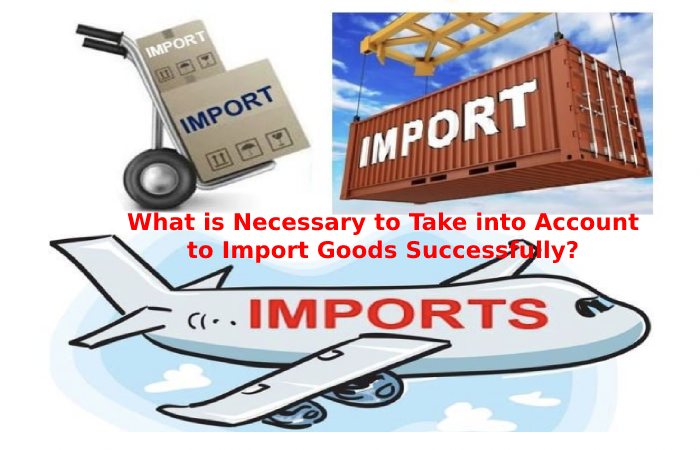Import and Export: The first thing we must know when we are dedicated to international trade is the exact meaning of the import and export terms and how to differentiate them well. Both activities constitute the basis of foreign exchange in which almost all countries participate.
Countries that participate in the exchange of products internationally are called open economies. The nations that participate oppositely, without exchanging goods or services with other countries, are closed economies. These countries consider themselves self-sufficient and also are self-sufficient with their resources and raw materials.
Table of Contents
What is Necessary to Take into Account to Import Goods Successfully?

1. Homologation of the Good in your Country
You should first find out if the good you intend to import is approved in your country. If this is not the case, you must follow specific procedures to regulate it.
Many products require border controls by Administrations other than Customs itself, so depending on the nature of the product to be imported, it is necessary to ensure that all permits or authorizations are obtained.
2. Customs Representative
It is essential to have the help of an expert customs professional who works on accessing goods to the most complicated ports safely and also within the estimated deadlines.
3. Origin of the Products to be Import
It is essential to consider this aspect so as not to fall into the trap of importing products from one country that belong to others since this only makes the transfer of goods more expensive by the sum of interlocutors.
4. Do Not Import More Than you Need
When you start to import products, it is essential to know what destination those products will be given. As a commercial strategy, it will be necessary to ensure the exit of imported material before entering other goods.
What is Necessary to do Before Exporting Goods?
1. Carry Out A Market Study
Understanding how the market where we want to introduce our merchandise works will be critical for our transfer idea to be successful. Know the demand and also supply, the competition we will have, the market trend, etc. These are aspects that we must consider before developing our export strategy.
2. Marketing Strategies
When communicating with potential clients, you must adapt to their place of origin, culture, interests, etc. Each campaign must be adapt to the target audience you want to address.
3. Balance Between Production and Export
To avoid surplus production, you must balance the production and export of goods. This way, you can make operations profitable by preventing extra expenses for storing or maintaining the goods.
4. Export Channel. the Choice of Transport Service
Define the distribution channel well by answering the question: Which is the most suitable for my product? Depending on the nature of the good to be export, you will need one means of transport or another, or the sum of several, to adapt to its needs. The choice will depend on aspects such as whether or not the product is perishable. The urgency of the transport, the level of access to the destination, the value of the merchandise, etc.
Procedures and Documentation to Import and Export
In both cases, both for import and export, you must pay special attention to the procedures and documentation. Prevent your load from stopping by taking into account all these documents:
- Proforma invoice.
- Bill of loading.
- A commercial invoice (Commercial Invoice).
- Shipment certificate.
- Packing list.
- Certificate of origin.
- Transport documents. Each transport selected for import will need additional documentation.
- Insurance policy.
- Permits and Authorizations according to the nature of the merchandise.
The Obligations and Duties of the Actors in the Import and Export
In the activity of foreign trade, there are always two actors, the buyer, and the seller, the one who exports and the one who imports. Both are link to a material exchange contract with origin and destination in different countries, cultures, and legislations. We cannot ignore this detail because one of the main issues to agree on is the points of exchange, goods, and economics. The typical steps to follow are as follows:
- The purchase-sale contract is sign, and the conditions are agree upon.
- The merchandise leaves the seller’s country, and the import takes place.
- The goods are transport until they reach the border of the country of destination.
- Importation occurs when the transported goods cross the country’s border to which they are destine.
To agree on the transfer conditions, it is essential to have international trade professionals with languages and also excellent personal skills to carry out the agreements and procedures required by the borders and the countries of the markets involved.
Conclusion
Exporting is selling goods or services produced in a country to foreign buyers. Importing is the opposite, buying in one country goods or services produced and also sold by a different country.
